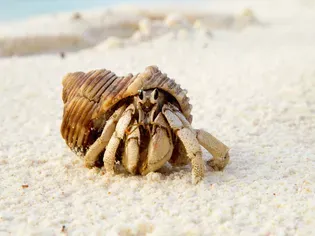8 Top Reef-Safe Sand Sifters
Updated on 04/26/24

8 Top Reef-Safe Sand Sifters: Maintaining a Pristine Marine Aquarium
Sand sifters are essential inhabitants of a reef tank, playing a crucial role in maintaining the overall health and balance of the ecosystem. These fascinating creatures are responsible for keeping the substrate clean and free of debris, while also aerating the sand, improving water quality, and uncovering buried food for other tank inhabitants.
When selecting sand sifters for your reef tank, it's imperative to choose species that are both reef-safe and compatible with your specific aquarium setup. To assist you in making informed decisions, here's a comprehensive guide to the top 8 reef-safe sand sifters:
1. Nassarius Snails
Nassarius snails are highly efficient scavengers that excel at removing detritus and algae from the substrate. They possess a long, slender proboscis for probing the sand and extracting food.
Benefits:
- Excellent at consuming algae and detritus
- Help prevent fouling of the substrate
- Small size allows them to navigate through tight spaces
2. Cerith Snails
Cerith snails are known for their unique spiral shells and voracious appetite for algae. They constantly graze on the substrate, consuming algae and biofilm.
Benefits:
- Efficient algae grazers
- Help maintain a healthy microalgae population
- Can withstand fluctuations in water parameters
3. Astraea Snails
Astraea snails are hardy and reliable sand sifters that consume a wide variety of organic matter, including algae, detritus, and microorganisms. They are often found on rocky substrates, where they scavenge for food.
Benefits:
- Versatile feeders, consuming both algae and detritus
- Help control nuisance algae growth
- Large size makes them visible and easy to observe
4. Fighting Conch Snails
Fighting conch snails are active predators that hunt and consume other snails, as well as worms and small crustaceans. They have a strong, muscular foot for burrowing into the sand and a sharp operculum for protection.
Benefits:
- Help control populations of nuisance snails
- Active hunters, providing entertainment for observers
- Create oxygenated tunnels in the substrate
5. Blue-Leg Hermit Crabs
Blue-leg hermit crabs are small, active creatures that scavenge for food on the substrate. They are omnivorous, consuming algae, detritus, and small invertebrates.
Benefits:
- Remove algae and detritus from the substrate
- Help prevent the accumulation of organic waste
- Their presence adds color and movement to the aquarium
6. Scarlet Hermit Crabs
Scarlet hermit crabs are larger than blue-leg hermit crabs and are known for their vibrant red coloration. They are also scavengers, consuming a wide range of organic matter.
Benefits:
- Excellent algae grazers
- Help maintain a tidy substrate
- Their striking appearance adds visual interest to the tank
7. Turbo Snails
Turbo snails are grazing snails that consume algae and biofilm from the substrate and rocks. They are slow-moving but highly effective at removing algal growth.
Benefits:
- Efficient algae grazers
- Help prevent the accumulation of nuisance algae
- Large size makes them easy to spot and observe
8. Convict Blenny
Unlike the other creatures on this list, the convict blenny is a fish that dwells in the substrate, sifting through the sand in search of food. It is a small, active fish that adds movement and interest to the aquarium.
Benefits:
- Continuously sifts through the sand, removing detritus
- Helps aerate the substrate
- Provides entertainment with its playful behavior
Conclusion
By incorporating reef-safe sand sifters into your aquarium, you can establish a thriving ecosystem that is both visually appealing and ecologically balanced. These fascinating creatures not only maintain a pristine substrate but also contribute to the overall health and well-being of your marine inhabitants. By carefully selecting species that are compatible with your tank setup and water parameters, you can create a harmonious underwater world that reflects the beauty and diversity of nature.
Explore More Pets

Freshwater Aquarium Filters
How to Deal With Cloudy Aquarium Water

Saltwater Aquarium Filters
How Do You Remove Chloramines From Tap Water?

Freshwater Aquariums & Habitat
Can I Keep My Koi Fish Inside?

Saltwater Aquariums & Habitat
14 Best Floating Plants for Your Aquarium

Freshwater Fish Health
How to Treat Ich on Freshwater Fish

Saltwater Fish Health
Fin Rot in Aquarium Fish

Freshwater Aquarium Filters
How to Do Aquarium Water Changes

Saltwater Fish Health
How Do Fish Get Parasites?